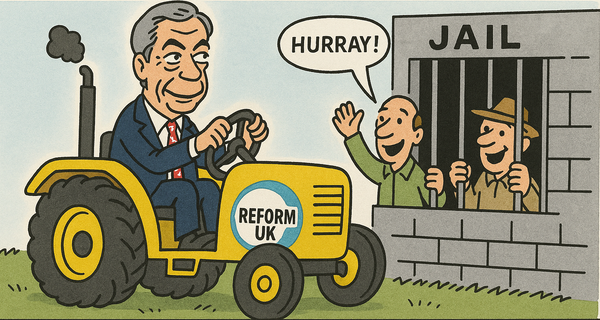#newsrw - Social Media Standards and Scuttlebutt
Moderated by Kevin Anderson. Initial presentations from the panel:
 Laura Kuenssberg, business editor, ITV News
Laura Kuenssberg, business editor, ITV News
When she started on Twitter, there were no guidelines, there were no BBC journalists using it. She got permission for a three week trial during the party conferences, and from there it became a fundamental part of how UK political journalists operate – including how they get tip-offs and keep up with contacts.
It’s a simple rule: don’t let them say anything on there you wouldn’t be happy to let them say on air… It’s another outlet, one with different potential and ways of working, but it’s still an outlet.
Don’t say anything you don’t know to be true. On the other hand, you can’t ignore the stories that everyone is talking about but you can’t confirm. Label what you know and what you don’t know. The massive explosion of social media has made this a very common judgement to make.
Neal Mann, digital news editor, Sky News
 Everyone was using it. Stories were developing on social media. Guido Fawkes was using it. A lot of us were winging it, making it up as we went along.
Everyone was using it. Stories were developing on social media. Guido Fawkes was using it. A lot of us were winging it, making it up as we went along.
Again, if you’re not happy saying it on air, or even a talk show, you shouldn’t be putting it online. However, on social media, there is a level of interaction – there are jokes and humour, and you have to let the journalists join in that. Journalists can act and anchors in the information storm.
But we have to engage in it. Before they would never engage in a rumour. There were riots of rumours in various towns – our job was to check and say if the rumour was wrong. We have to recognise that social media users aren’t stupid. People see other services, so now we have to reference each other.
Katherine Haddon, head of online, English, AFP
 People often have more access to social media than tradition media in some other countries.
People often have more access to social media than tradition media in some other countries.
Twitter is an early warning system for news. International forces have Twitter rows with the Taliban – they’re very hot on Twitter and social media generally.
The agency’s chief editors have issued guidelines which boil down to following the same standards as they do for the wire. Reporters must identify them, they must inform line managers of accounts and they avoid tweeting breaking news – because that’s their business model.
Tom McArthur, UK editor, Breakingnews.com
New to the landscape – started in 2009, only took on full-time editors as of 2011. They’re trying to be positive, fair and get things out – while giving their sources credit.
We encourage our editors to use their personal accounts – but don’t say anything you wouldn’t say on the site.
Questions
Q. Are your contracts changing to cover ownership of the account?
LK: People got into a terrible state about me taking my followers. You can’t take them – they can unfollow you with one click. They’re not “property”. I never owned the people who followed me. It was an amicable agreement with the BBC.
 KA: It’s more like a reporter’s readers than their contact book. A columnist who’s a brand will have an audience follow you.
KA: It’s more like a reporter’s readers than their contact book. A columnist who’s a brand will have an audience follow you.
NM: What are they going to do with it? If they give it to someone else, and the followers don’t like them, you’ve lost anyway.
Q. Breaking news – when should you do it?
LK: As soon as you can, and in the fastest way. If you have a camera, do it on camera. If not, tweet,
KH: You have to take account of your customers – ours are the news companies, not the audience.
NM: But sometimes things drop on Reuters twitter feeds before they do on the wires. We’ve all got tow phones – our correspondents call it in and tweet it at the same time. It’s still quicker on social media. Court cases we run just off Twitter as its the only way of getting it out.
Francois Nel: Coudl I ask Liz about Facebook Subscribe?
Liz Heron: It is a personal account they start to use for work. I don’t really have an answer yet, but I will develop one over the next couple of years.
Q. Are people over-stepping the libel laws on social media?
NM: There was a lot of that during the Jefferies situation. Journalists are getting involved to remind people that there is contempt of court. The key thing in social media is the nodes, the influencers. We often need to step in when a celebrity starts tweeting things.
Q. Is it conceivable that a staff journalist that was completely person, and not used in a work capacity, that they say things on that don’t have work consequences?
LK: It probably is if you only put the most vanilla, mundane things in the world on there. And journalist with a byline, a findable name, would find it pretty tough.
KH: It’s very difficult. As a journalist you always have to be conscious that whatever you do could be scrutinised. Any march you go on could be interpreted as a statement.
 NM: If you look at the language of print journalists and broadcast journalists on Twitter – the print journalists will swear on twitter. Broadcast journalists never do.
NM: If you look at the language of print journalists and broadcast journalists on Twitter – the print journalists will swear on twitter. Broadcast journalists never do.
Q. Media organisations increasingly rely on freelance staff – what sort of guidelines should they have?
NM: I was freelance for my first three years of using social media. As a freelancer you’re more aware. The same advice should apply.
*Q. Facebook comments – what do the panel think about different types of commenting? *
LK: It is different when you know who people are. Guido Fawkes – very lively comments, and pretty much everyone there is a pseudonym. In the UK we’re at an early stage with Facebook and news.
Q. How do you use the services differently?
KH: I keep Facebook for personal stuff – just close friends. And Twitter is for work.
NM: Twitter is faster and more newsy. Facebook is slower, and much more personal. I post music videos I like, for example, not just news. Facebook cogent hangs around much, much longer. Sometimes things stay there for a long while. I look at the key pieces of content, and put those on Facebook.





